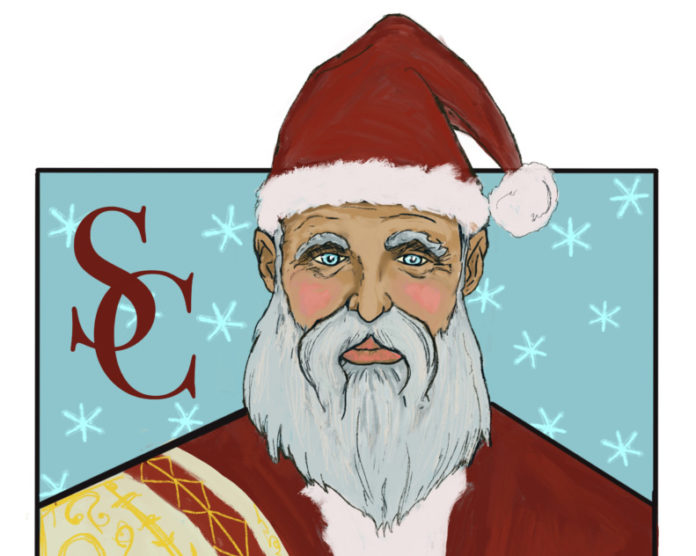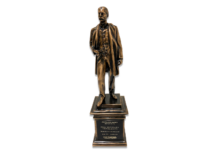It’s that time of the year when holiday lights dress area homes and businesses. In some yards sit a number of inflatable decorations.
We see the imagery all around us, so it’s easy to get used to it and perhaps ignore it. Santa’s image is plastered up everywhere during Christmastime. We see Santa Claus doing all kinds of things: Riding a motorcycle, vacationing in his Hawaiian shirt and dancing. Santa is beyond an icon. As an artist, I always found it interesting how some things become legendary while others fall out of fashion. Just how did the man in red become so iconic? Here’s a deeper dive into the iconography of Santa.
St. Nicholas is where the lore of Santa Claus begins. He was born in the third century in the village of Patara, which at the time was Greek but is part of modern-day Turkey. He was a devout Christian and became well-known for his kindness, generosity and love of children. He was a bishop at a time when the Romans were persecuting Christians. He died on Dec. 6 in 343 AD. All the stories of Nicholas showcase him as a protector and helper of those in need.
Over the centuries, his legend would grow. St. Nicholas seemed to always have a large following. In 1492, Christopher Columbus named a Haitian port after St. Nicholas. Jacksonville’s St. Nicholas neighborhood was originally named by Spanish settlers. While the British had St. George, the Americans of the Revolution invoked St. Nicholas as protector. He was named patron saint of New York and the Historical Society. While many European countries celebrated St. Nicholas, he became more like the icon we know today in the U.S. around 1809. Washington Irving wrote “Knickerbocker’s History of New York,” and in this he referred to a Dutch burgher elfin with a clay pipe, a jolly St. Nicholas.
The 1821 publication, “The Children’s Friend,” added more to the St. Nicholas lore. In the book he was called Sante Claus, who rode around on a sleigh with flying reindeer and came from, you guessed it, the North Pole. Sante would reward the nice and punish the naughty. The book also features the first time that Sante Claus came on Christmas Eve instead of Dec. 6. Amazingly, this book’s author and illustrator are not known.
The part you all have been waiting for: In 1823, “The Night Before Christmas” – back then known as “A Visit from St. Nicholas” – was published. The poem describes the appearance of St. Nicholas, or rather the round-shaped, clay-pipe smoking, old bearded elf. There is also debate on the true author of the poem: Is it Clement Clarke Moore or Henry Livingston Jr.? Whoever the author was, the poem had a huge impact on the future of Christmas tradition.
Thomas Nast created drawings and images of Santa with a flowing beard and fur clothing. Nast’s illustration featured a Santa who loved his clay pipe and was loyal to the Union and President Lincoln during the Civil War. Thomas Nast’s Santa was a large influence on the population and showed us how the elven Santa Claus should look.
Famous illustrators such as Norman Rockwell and N.C. Wyeth tweaked the vision of Santa Claus. In 1930, an advertising campaign would cement the look of Santa Claus. The artist was Haddon Sundblom and he painted 35 years’ worth of Santas for the Coca Cola Company. The illustrators reimagined Santa back into a man, no longer an elf, but a full-fledged icon.
St. Nicholas has come a long way. Starting with an extraordinary life and ultimately attaining sainthood centuries later, St. Nicholas was a remarkable person who was a protector and giver. His generosity was legendary, and for many centuries people admired him and tried to emulate him. He became a symbol so powerful and enduring that the legend grew and evolved. Santa Claus, a man or elf of his time, is adaptable for each time period, giving hope to those who need it the most.

























